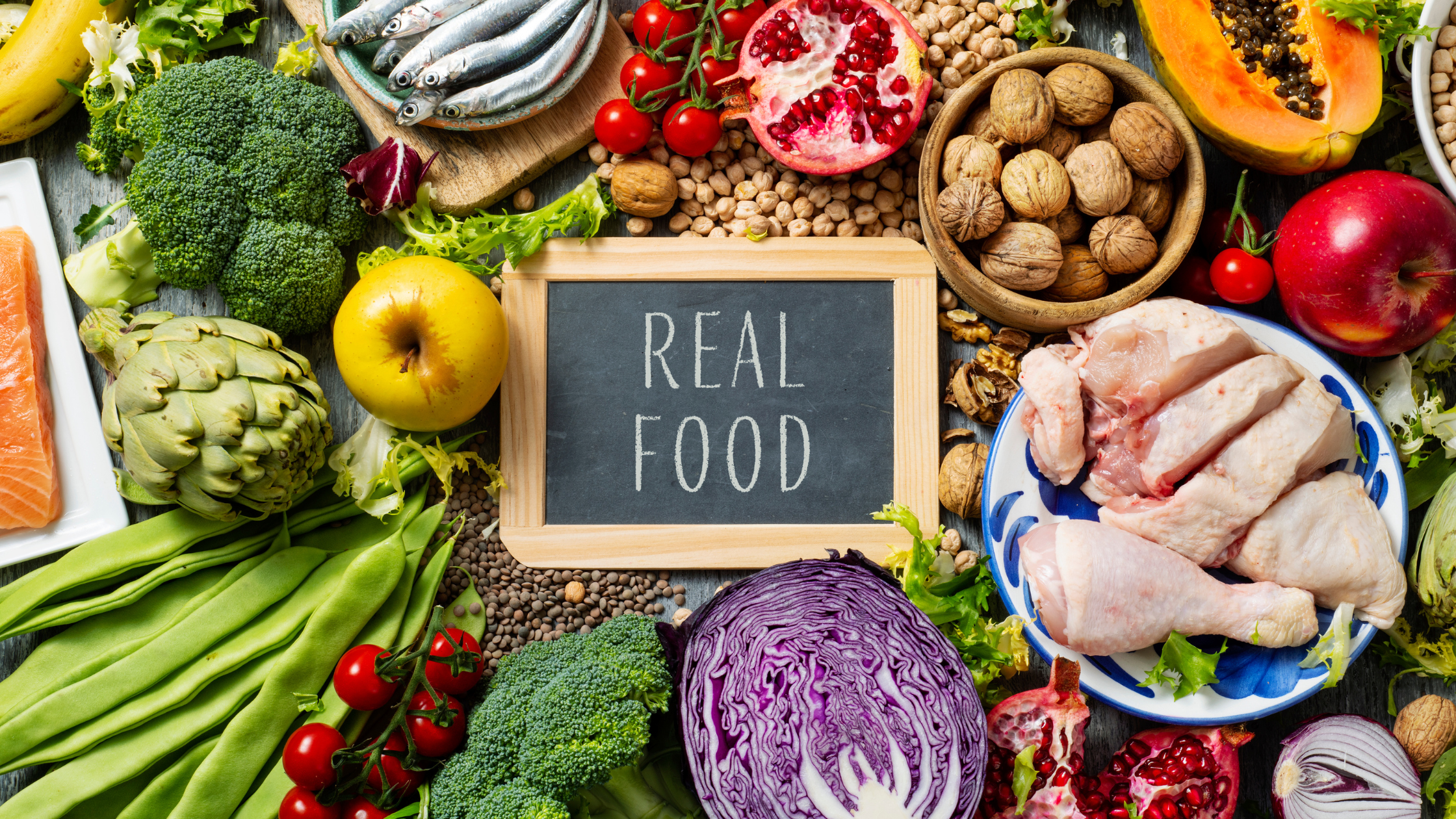
Monthly Archives: January 2024


Anxiety, Mold, And The Hidden Threats To Your Wellbeing
Food Choices, Stress, and Mold Connection
The link between food choices, stress, and mold is significant. While convenient and processed foods were introduced to save time, they have had lasting negative effects on public health. These foods, rich in additives but low in nutrition, harm both the body and mind.
In the midst of a busy lifestyle, stress can dysregulate the nervous system, leading to various symptoms and illnesses, including heightened anxiety levels.
Anxiety acts as a natural alarm, signaling underlying issues that need attention. One such issue is the toxic aftermath of mold exposure, a hidden intruder that can be as harmful as it is widespread. G
Given the interconnectedness of the nervous and immune systems, taking a proactive approach is crucial to protect against unseen threats in your environment.
Mold Sickness Symptoms and Healing
Mold sickness presents a range of symptoms, from neurologic disruptions to immune suppression, posing a challenge in recognition due to potential misdiagnosis or undervaluation in healthcare.
Actions to Take:
- Meditate Regularly: Begin with meditation to calm your nervous system, creating a foundation to implement lifestyle changes.
- Nourish Your Body: Prioritize a diet that supports your body’s healing from mold-induced inflammation.
- Beware of Misdiagnosis: Understand that environmental factors such as mold toxicity may be overlooked in mainstream medicine, leading to ineffective treatments.
- Seek Positive Support: Engage with communities that focus on healing and avoid hopeless discussions.
- Embrace Nature: Reconnect with natural rhythms and adopt healthier living habits to counteract modern lifestyle-induced hypersensitivity.
Learn more how to protect yourself from mold sickness by watching my interview with Dr. Traci Potterf below:

Transform Stress Into Peace And Power With Rapid Eye Technology
What is Rapid Eye Technology
How it Works
Applying RET to your Daily Life
In Conclusion
Sign up to get your free worksheet!
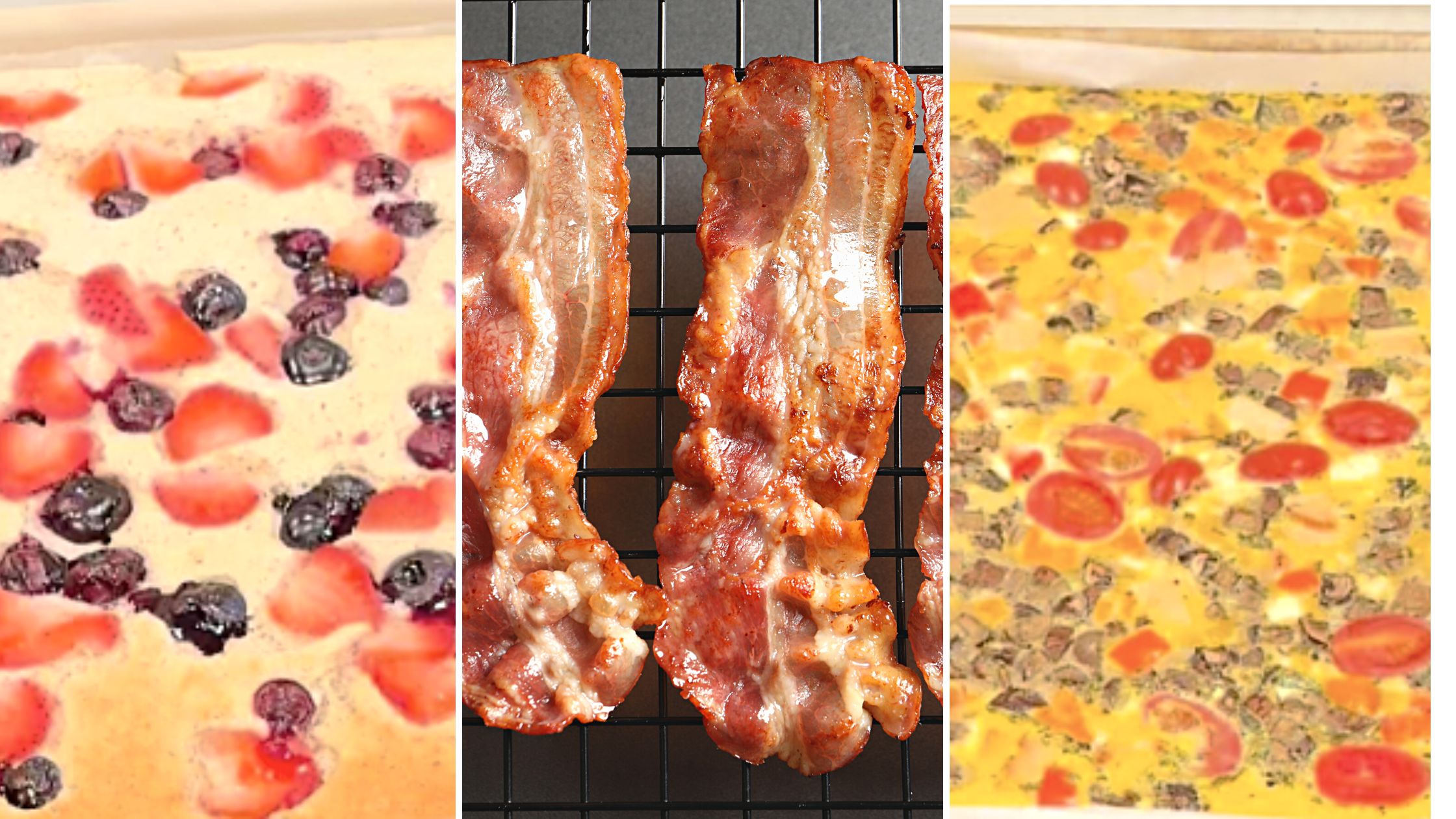
Sheet Pan Breakfast
- In sharing these recipes I've chosen my favorite add-ins, feel free to substitute the vegetable or fruits of your choice.
- If you're making all three recipes at once you'll need three racks in your oven. If you don't have three racks you can use a footed cooling rack to make a space. Place the footed rack into the bacon, not the other dishes.
- When making the eggs and pancakes it's helpful to use unbleached parchment paper for an easier cleanup. Lightly brush the tray with a little oil to help the parchment paper stick, lay down the paper, and then lightly oil the paper. I know it seems like a lot of work but cleanup is so much better when you do it this way
- Chop and dice ingredients as needed before beginning the assembly process
- The timing doesn't come out exact for all the recipes (meaning they don't all finish cooking at the same time) but it's close enough
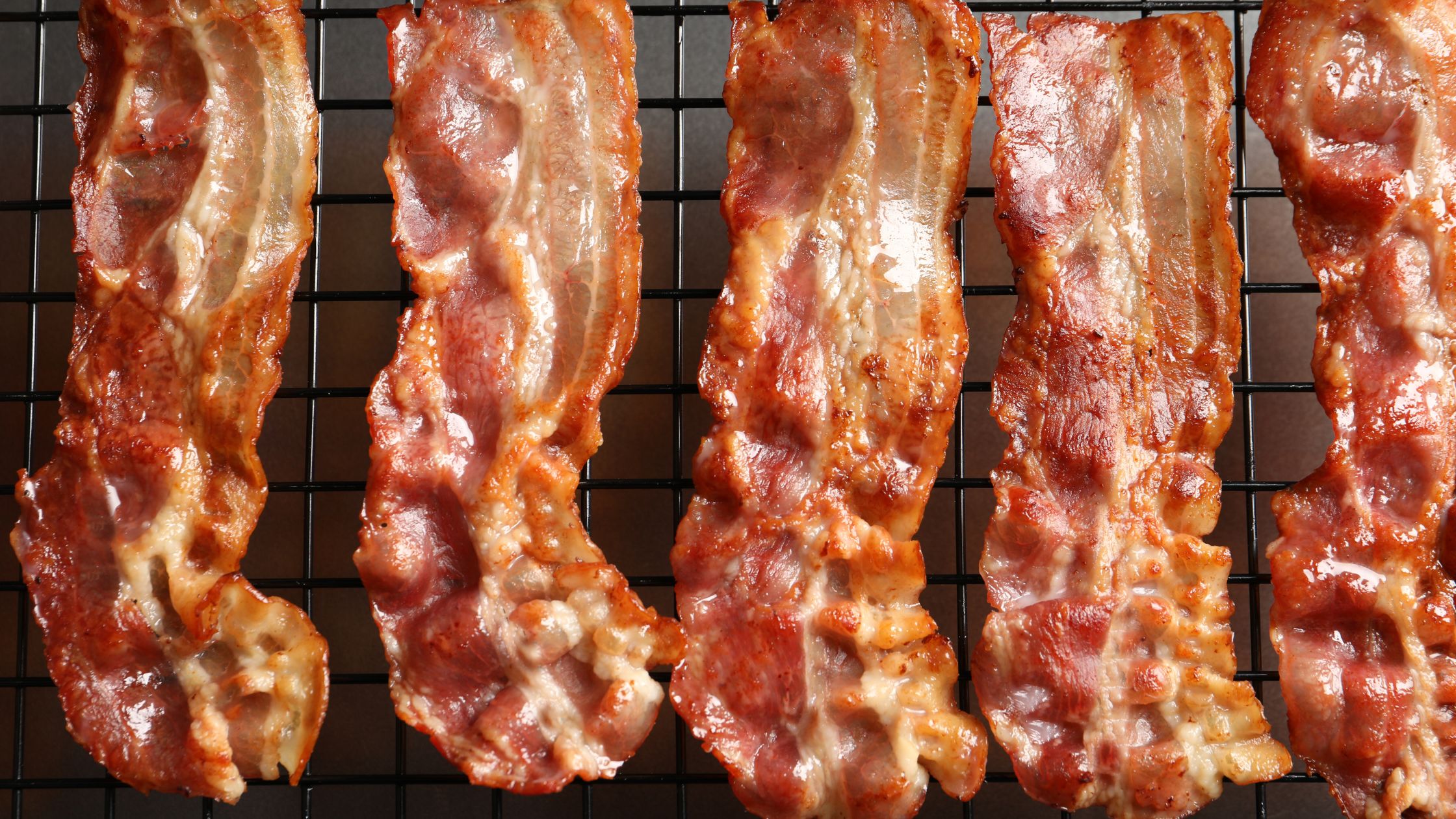
Sheet Pan Bacon
Ingredients
- 1 pound uncured bacon, preferably from pasture-raised pigs
Instructions
- Preheat oven to 425°F
- Add parchment paper to the baking tray
- Place a cooling rack (flat) on the tray
- Lay out the strips of bacon on the rack
- Place the tray in the oven on the bottom rack
- The bacon will take 30-45 minutes to cook depending on thickness and crispiness preference so you'll need to keep an eye on it
- When bacon is cooked to your preference remove it from the rack and pat dry with toweling to remove excess grease
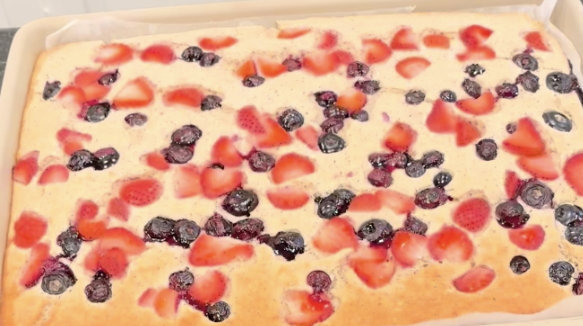
Sheet Pan Pancakes
Ingredients
- 2 cups gluten-free flour blend, such as King Arthur's Measure for Measure
- 1/4 cup ground flaxseed
- 5 teaspoon baking powder (yes I know it's a lot, trust me on this)
- 1 teaspoon salt
- 1 Tablespoon organic sugar
- 2 eggs
- 1/3 cup organic milk
- 1/3 cup avocado oil
- 2 teaspoons vanilla
- 1 1/2 cups water
- 3 cups fruit - I tend to use mixed berries but chopped apples or pears would work well here too
Instructions
- Prepare a tray with parchment
- Whisk together dry ingredients
- Then add liquid ingredients and blend until fully combined and the batter is smooth
- Pour mixture into pan and spread into an even layer
- Top with fruit, if using apples or pears dust with cinnamon
- Bake 5 minutes
- Reduce heat to 350°F and bake for another 10 minutes or until pancake is firm and bounces back when tapped
- Remove from oven, slice, and serve with maple syrup or jam
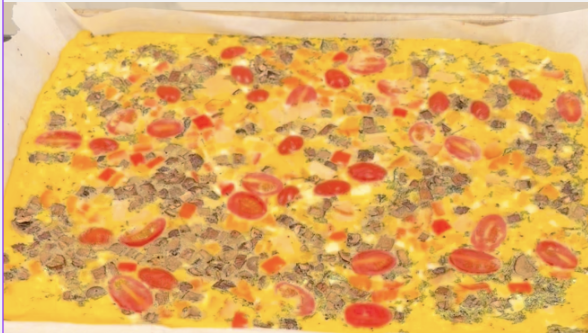
Sheet Pan Eggs
Ingredients
- 18 eggs
- 1/3 cup organic milk
- 1 1/2 teaspoons dried parsley
- 1 teaspoon dried basil
- 1 teaspoon sea salt
- 1 teaspoon black pepper
- 1/2 cup diced mushrooms
- 1/3 cup diced bell peppers
- 1/2 cup diced cherry tomatoes
- 1/2 cup diced lunchmeat, optional
- 1 - 1 1/2 cups shredded organic cheese, optional
- Guacamole
- Hot sauce
Instructions
- Prepare a tray with parchment
- In a mixing bowl blend eggs, milk, herbs, salt, and pepper until well combined
- Pour eggs into pan
- Sprinkle veggies over the top of the egg mixture
- Sprinkle with lunchmeat if using
- Sprinkle with cheese, if using
- Bake 15 minutes or until eggs are firm and bounce back when tapped
- Remove from oven
- Slice and serve with guacamole and hot sauce
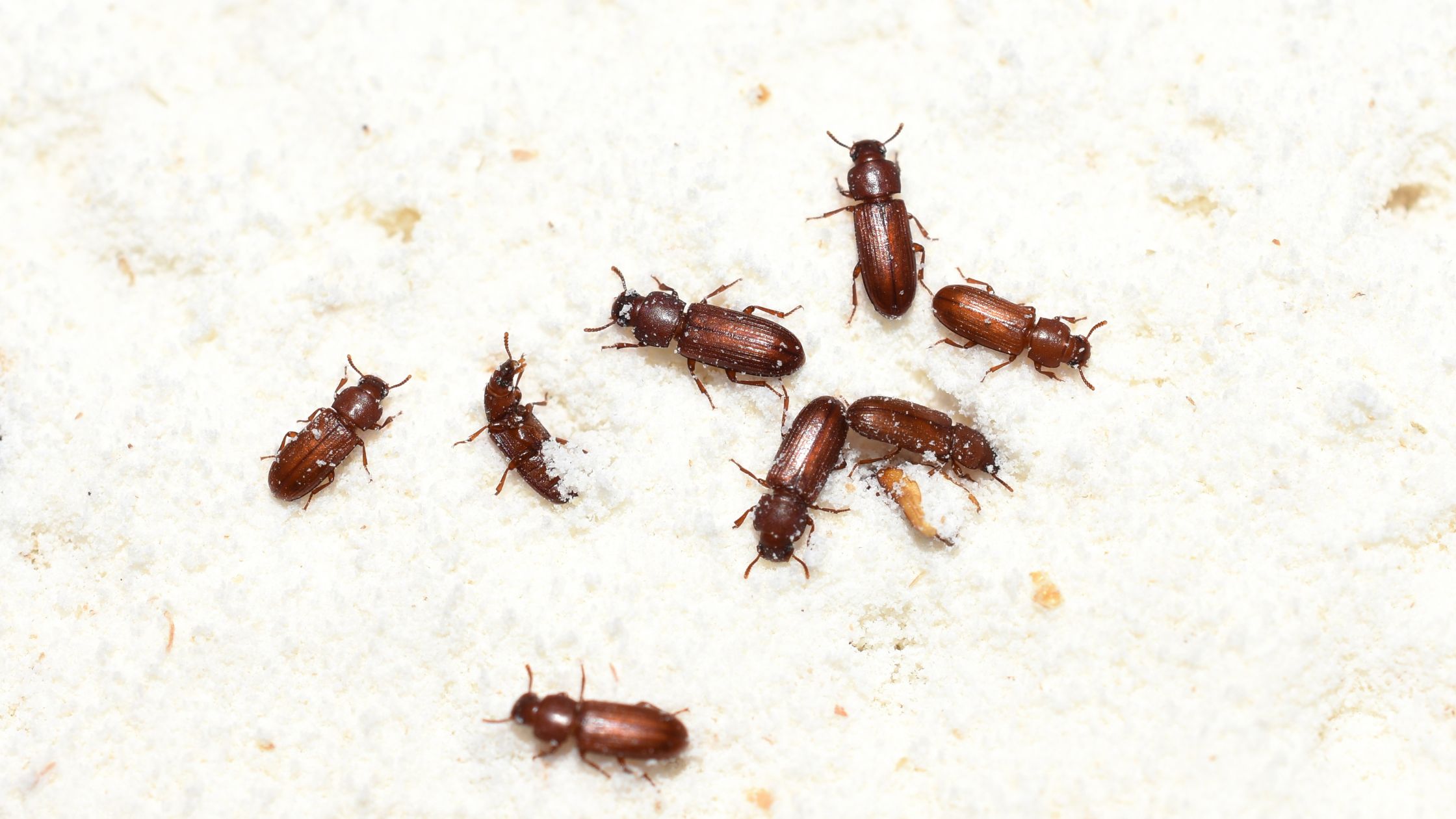
Pantry Pests
- Beetles, there are so many different kinds. The most commonly found beetles include drugstore, confused, saw-toothed, spider beetles, warehouse, and flour beetles. They tend to target pantry staples like flour and grains. Infested food should be discarded, especially because warehouse beetle larvae hairs may trigger an allergic reactions if consumed.
- Cockroaches are the worst. There are several different kinds and sizes. They tend to swarm your trash or possibly get into your dishwasher (remember to clean that dishwasher food trap out regularly) and their droppings may cause allergies.
- Indian Meal Moths. These are those little flyers that love setting up shop in your pantry. They usually come in with flour or pasta from the store and can lay hundreds of eggs, causing a real hassle. This is part of why I encourage freezing grains and flours before putting them into the pantry. It won’t stop them, but it can help reduce their numbers.
- Pharaoh Ants. These tiny yellow or light brown ants tend to alternate between a desire for carb-rich and then protein-rich foods. Unfortunately while they’re looking for their next food fix, they may find your pantry.
- Spiders can sometimes be found hanging around in your pantry, especially if there’s an infestation of other bugs they can eat.
- Weevils are tiny bugs that feast on rice, barley, corn, and oats. They’re so small that they show up simply as dark specs in the flour or grain.
- Yellow Mealworms love damp, moldy food, so if you spot them, the item was likely already expired or got too damp.
What Pantry Pests Like to Eat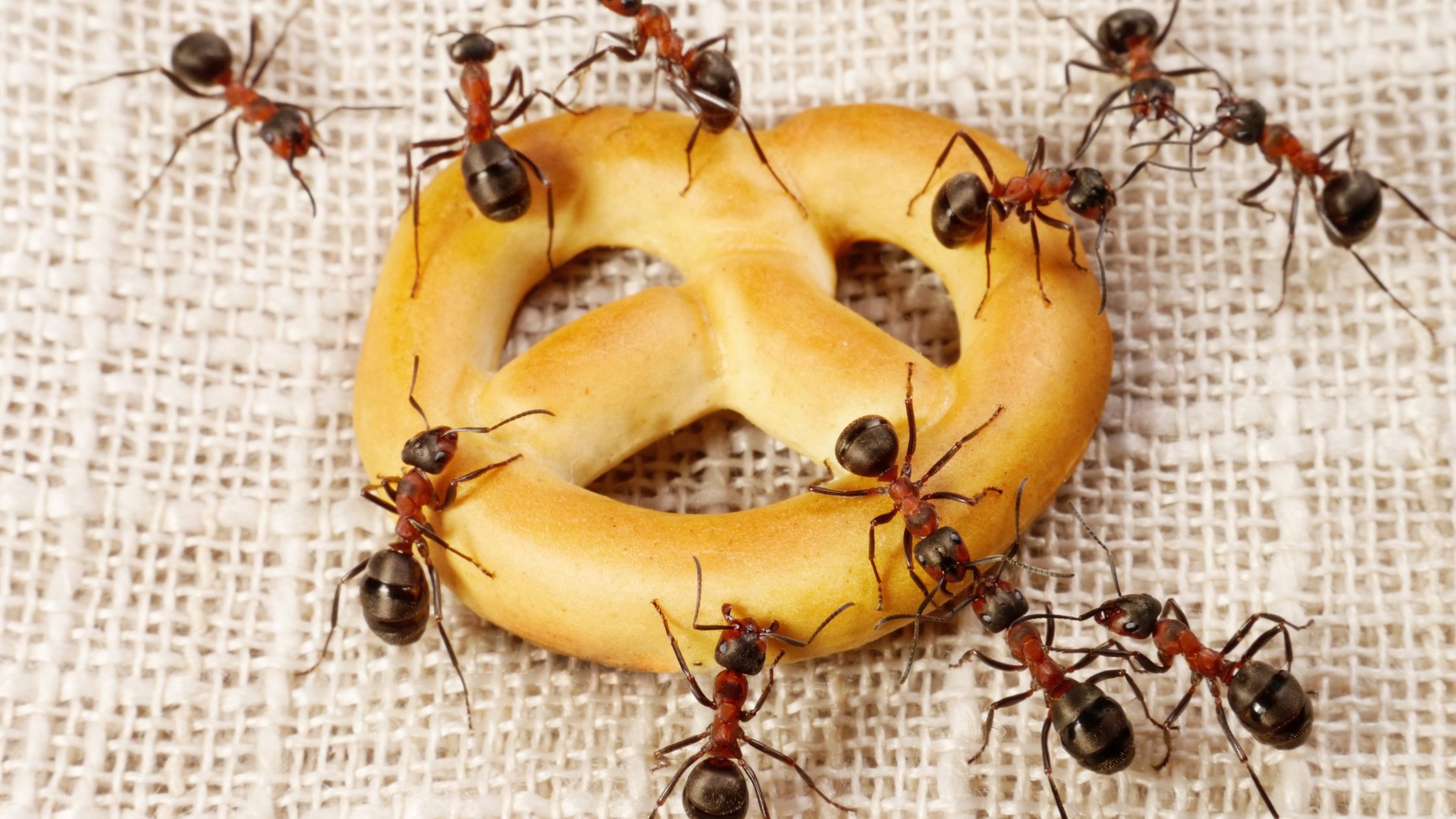
- Cookies
- Cornmeal or corn kernels
- Crackers
- Flour
- Legumes - beans and peas
- Nuts and seeds - and flours made from them
- Pasta
- Powdered milk
- Spices
- Sugar
- Sugary drink mixes
How to Keep Pests out of Your Food Storage
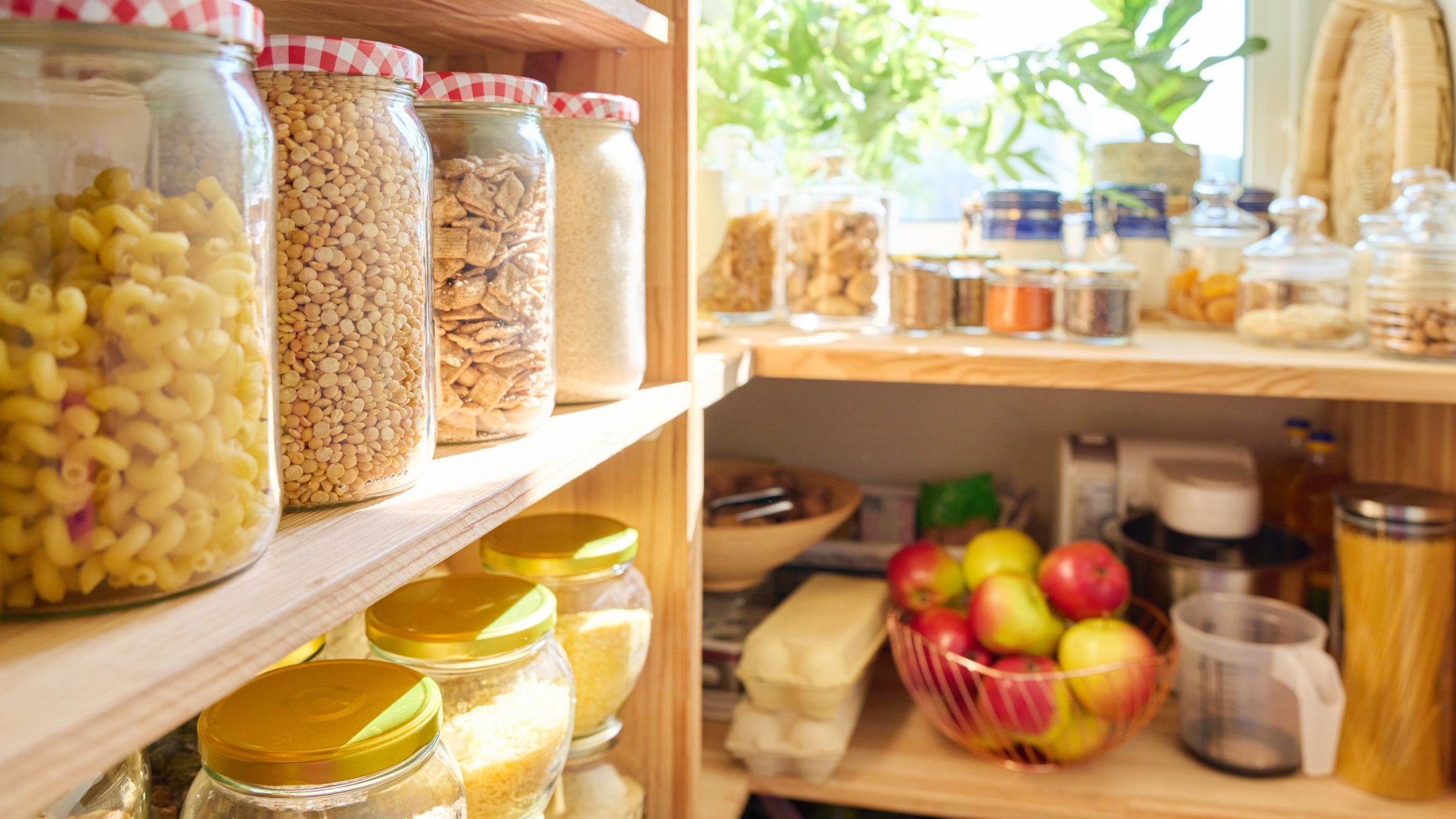
In conclusion

Word Of The Year
Back in 2013 I was challenged by a business coach to pick a word of the year. A single word that would encompass my goals and guide me for the year ahead. Each year since then I've continued to go through the process of picking a word.
This year word that resonates the most with me is Clarity.
2024 Word of the Year: Clarity
ˈklarɪti
noun
the quality of being coherent and intelligible.
the quality of being certain or definite.
the quality of transparency or purity.
the quality of being easy to see or hear; sharpness of image or sound.
2023 was a very full year. Who am I kidding? The last few years have been over-full, challenging, and more than a little overwhelming for everyone. I think we all have been through a maelstrom, and are just now beginning to wake up from the chaos and confusion that started in 2020 with the advent of Covid.
As I look back over the previous year, I am noticing a pattern. It's become apparent that I have narrowed my focus on certain things in my life, both personally and professionally. I realize, in this narrowing down, that what I am doing is making the way clear for what is to come next. I am making room to be more focused and more present. I’m also making room for opportunity and change to show up and be available in my life. By simplifying, by clarifying, I'm essentially unmuddying the waters of my life.
So much of the work I do in sharing about ingredients, focusing on preparedness, and sharing holistic health and wellness information is already about helping others like you learn and see and notice what's impacting them and their lives. It's about educating and equipping you to make informed choices. It's about making things clearer and more transparent. Plus, I believe the more you know the more you notice. That has an echo of clarity to as well.
Focusing on clarity and what lies ahead will, I think, help make life less stressful. It feels like clarity also brings the promise of abundance. I'm excited to see how clarity will show up for me in the year that lies ahead of us.
As I learn to open up to the light of clarity in my own life, I'm also looking forward to sharing what I learn with those in my community and supporting them on their clearer and more defined wellness journey.
I think it's going to be a beautiful year ahead.
Previous Words
- 2023- Celebrate
- 2022 - Illuminate
- 2021 - Brave
- 2020 - Authenticity
- 2019 - Simple
- 2018- Change
- 2017 - Mindfulness
- 2016 - Focus
- 2015 - Balance
- 2014 - Inspire
PS If you have celebrations that are joyful and warming to your heart, or books that resonate with this theme for you I'd like to hear about them. I'd also love to know if you've chosen a word for 2023 and what it is. You can drop a comment in the online community.
